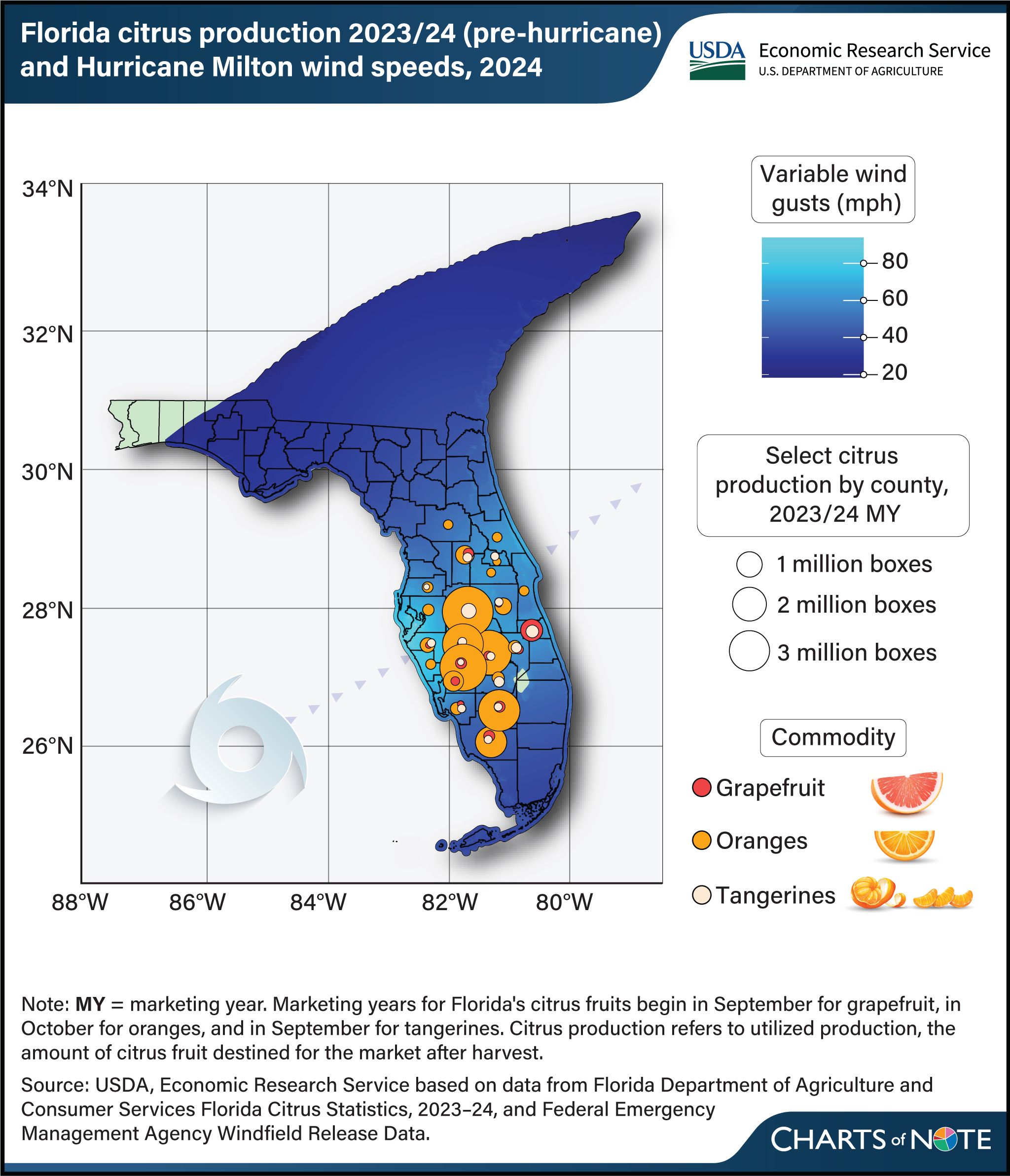Hurricane’s path through Florida’s citrus belt dealt further blow to struggling citrus sector
- by Skyler Simnitt
- 5/27/2025

In October 2024, Hurricane Milton made landfall at Siesta Key, Florida, south of Tampa Bay, before moving eastward across many of the State’s prime orange-producing counties, including Polk, Hardee, and Highlands. Researchers from the University of Florida’s Institute of Food and Agricultural Sciences estimated that agricultural losses from Milton exceeded $190 million. The storm created additional challenges for the State’s citrus industry, which was already dealing with the disease Huanglongbing, also known as citrus greening. Following the hurricane, USDA’s National Agricultural Statistics Service reduced the 2024/25 Florida orange utilized production forecast by 20 percent, from a historically low 15 million boxes to 12 million boxes of utilized production. Similarly, forecasts for Florida grapefruit and tangerines were revised downward by 14 percent and 13 percent, respectively. Milton is the third major tropical storm to hit Florida’s citrus belt in the last 10 years, preceded by Irma in 2017 and Ian in 2022. A decade ago, the Sunshine State was the Nation’s top producer of citrus but has since been surpassed by California. Despite considerable attrition of the State’s citrus acreage, Florida oranges continue to play a major role in the U.S. orange juice industry and are expected to account for an estimated 49 percent of the oranges used in domestic production in the 2024/25 season. This chart is drawn from the USDA, Economic Research Service Fruit and Tree Nuts Outlook: March 2025. Also see related Charts of Note, Natural disasters, disease cut Florida orange production an estimated 92 percent since 2003/04, and Florida’s declining citrus production receives further hit with Hurricane Ian; official losses not yet estimated.

